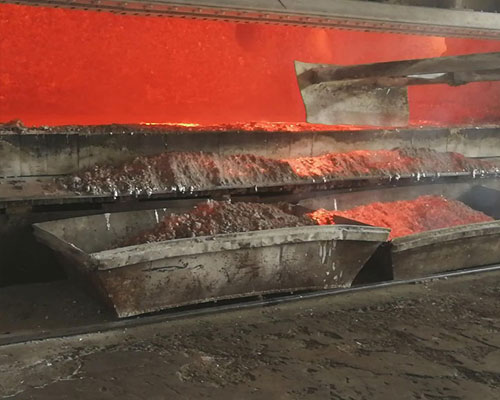Grain refinement is one of the important processes in aluminum alloy melting and casting, and it is also one of the most effective measures to solve casting defects such as porosity, coarse grains, and cracks. In alloy casting, it is non-equilibrium crystallization. All impurity elements (including alloying elements of course) are mostly concentrated in the grain boundaries. The smaller the grains, the larger the grain boundary area. The impurity elements (or alloy elements), the higher the uniformity. Flux refining, online degassing and filtering can achieve the grain refinement.
For impurity elements, high uniformity can reduce its harmful effects and even turn the harmful effects of a small amount of impurity elements into beneficial. In terms of alloying elements, the uniformity is high, which can exert greater alloying properties of alloying elements and achieve the purpose of making full use of resources.
In the production of aluminum alloys, for abrasive materials, the uniform distribution of alloying elements and impurity elements is particularly important, because the profile must be corroded to produce a uniform sand surface. The finer the grains, the more uniform the distribution of alloying elements (impurity elements), and the more uniform the sand surface after corrosion.
Reasonable casting temperature is also an important factor in the production of high-quality aluminum rods. Too low temperature can easily produce casting defects such as slag inclusions and needles. If the temperature is too high, casting defects such as coarse grains and feather crystals are likely to occur.

After the refinement of the aluminum alloy liquid, the casting temperature can be appropriately increased, and generally can be controlled at 720-740 degrees. This is because the molten aluminum becomes sticky and easy to solidify after grain refinement.
In the casting process, the aluminum rod has a liquid-solid two-phase transition zone at the crystallization front. Higher casting temperature has a narrow transition zone. The narrow transition zone is conducive to the escape of gas discharged from the crystallization front. Of course, the temperature should not be too high, too high casting temperature will shorten the effective time of the grain refiner and make the grains relatively larger.

